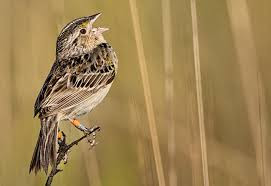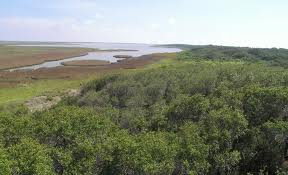 |
| Aransas National Wildlife Refuge |
Back in the forties and fifties the whooping cranes were in the news, weekly, if not daily. In 1942, there were only fifteen whoopers left in the wild. (Yeah! Yeah! How many of you have heard me say this? It’s my opening line in my whooping crane presentation I give to the public.) But, think about it. Seventy years ago, there was no internet, pod casts, instant messaging, 500-chanel + TV stations. Print media and radio were how most folks got their news; yet the media blitz that hit U.S. and Canada during the these two decades was unprecedented as far as an environmental issue was concerned.
Scientist were racing against time to located the last remaining whooping crane nesting site located somewhere in the vast wilderness of central Canada before development wiped it out sending the cranes into extinction. It wasn’t until 1955 that the site was discovered. It was a time for celebration, but in reality, the work had just begun.
More than fifty-five years later, that work continues. Although the number of whoopers (wild and captive) is approaching the 600 mark, these glorious white birds are in more trouble than ever. And if you’re into nature, conservation, birding, or anything environmental, you’ve probably read or listened to a news story concerning this species.
Whenever I crack the cover of my Audubon magazine, I immediately turn to senior columnist Ted Williams contribution. Mr. Williams does not pull punches in his reporting. His articles are informative, inspirational, and complete. In the March-April 2013 issue entitled ‘Why Birds Matter’, Mr. Williams
 |
| photo from Florida Audubon |
reports on the severely endangered Florida grasshopper sparrow, a species that could easily disappear right before our eyes. He writes, “Maybe the only explanation for people who have to ask why the Florida grasshopper sparrow matters is this: It matters not because it is a source of enrichment for human lives (although, it is), not because it is a source of medicine or agent of pest control (it is probably neither), not because it is an ‘indicator species’ that tells us we haven’t completely wrecked our habitat, not because is is anything, only because it is.” I’ve never spotted a Florida grasshopper sparrow and I probably never will, but knowing that it might became extinct during my lifetime saddens me.
I’ve digressed it bit. Back to Audubon magazine. Imagine my surprise and delight when I got the July-August issue, this one entitled ‘Big Bird: Saving North American’s Tallest Bird.’ While researching the story, I learned that Williams was on the Aransas National Wildlife Refuge in Texas (the whoopers’ winter home) in February at the exact same time I was. Our boats may have cross paths; who knows? Nevertheless, I was glad he visited this fragile ecosystem and reported on the political fight that is occurring over water rights. If too much freshwater is diverted from the refuge because of surrounding development, not only will the cranes lose out, but so will the entire bay system, resulting in an economic disaster to this long stretch of Texas coastline. Williams writes, “When it hasn’t been corrupted by gross freshwater diversions, San Antonio Bay, which contains the Aransas National Wildlife Refuge, annually has fed the local economy with $1 million from crabbing, $6 million from recreational fishing, $17 million from oystering, and $30 million from shrimping. And that doesn’t take into account the living resources in Aransas Bay or trade in fuel, food, and equipment.”
So, it’s not just about the birds, but in protecting and saving them, we’re also saving our own
skin.
For more information go to:
http://tx.audubon.org
http://www.fws.gov/refuge/Aransas/
www.operationmigration.org
Operation Migration is in the middle of a major fundraiser to purchase new ultralight planes so they can keep flying next year. Here’s the link to contribute. They have 25 days left.
http://www.indiegogo.com/projects/hope-for-the-whooping-crane-takes-flight


